Afternoon Tea at Mount St. Benedict
/It was a Brazilian Benedictine monk, Dom de Caigny, who originally purchased 240 acres in 1912 to establish the Mount Saint Benedict Abbey. Located 700' above sea level, overlooking the town of Tunapuna, the Abbey looked rather majestic with its tower and red roofs as we drove the tortuous, narrow, steep road below which leads up to it.
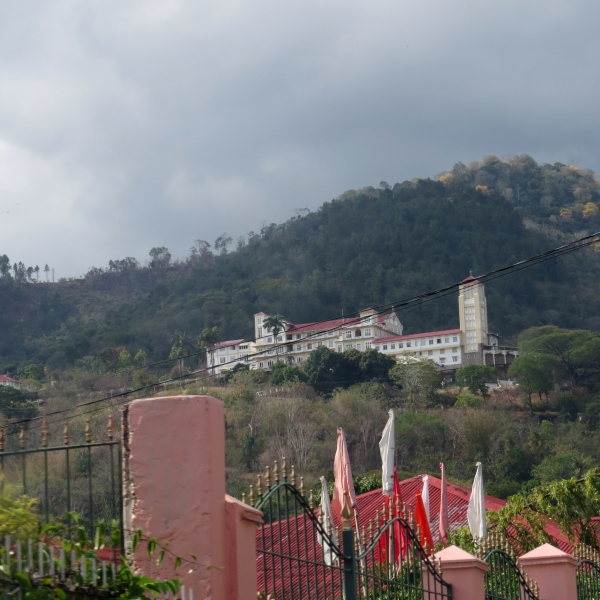
The motto of the Benedictine order is “ora et labor” (pray and work), but with only 10 monks left, they get some help from the locals to maintain the church, monastery, seminary, a drug rehab center, a yogurt factory and the Pax House. The Pax House, a guest house and lodge on the Abbey grounds, is quite well known for serving a traditional afternoon tea in serene surroundings. I'd made reservations on-line to take tea one afternoon and a breather from our whirlwind tour of Trinidad.
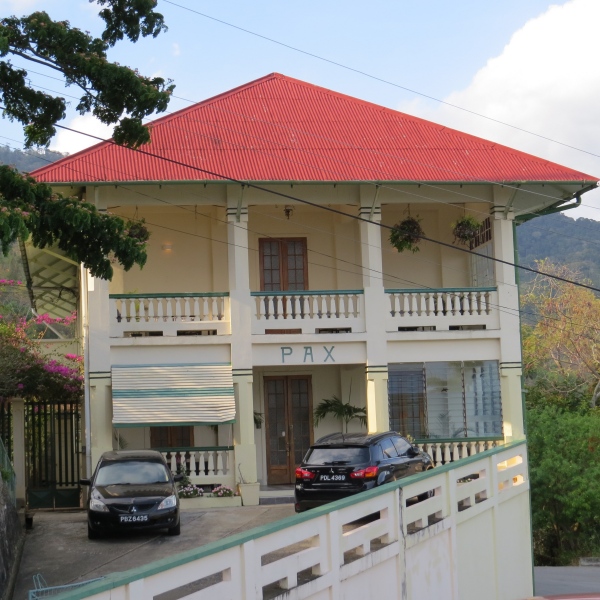
The Pax House (pax = peace in Latin) was built in 1916 and offers views of the sprawling city below. It's plain, as you might expect. From the front, it looked lovely, but on closer inspection, like so many other sites we visited in Trinidad, it is also regrettably in sad disrepair. We arrived a bit late due to traffic and our welcome was less than warm. We were left to wait on the porch for 10 minutes before being shown to a table in the tea room, though there were only two other young women taking tea.
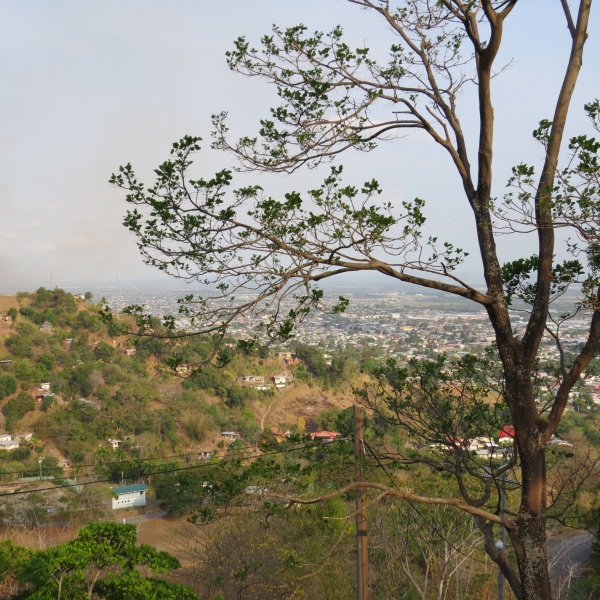
The xeroxed menus offered three tea services … the Presidential, the Traditional and the British. We ordered one of each. What had enticed us to come to the tea room was this description: “A famous room at the Pax House is the Tea Room. The Tea Room was constructed during World War II and it is the oldest Tea House in the country. The Tea Room serves a variety of teas from different countries.” They were out of two of the three teas offered, so we settled on one big pot of Earl Grey (which I have every morning for breakfast, by the way...nothing too exotic there). After a short wait, the tea and accompaniments were served.
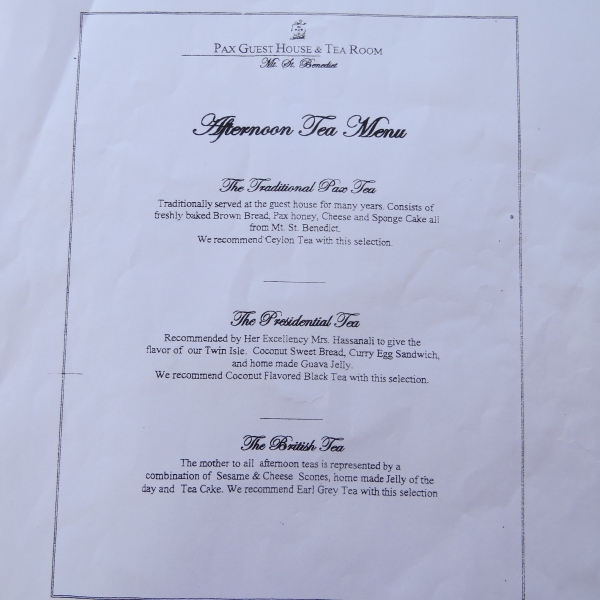
Lin poured. We drank and nibbled, unimpressed by the tea, the food and the tea room. It was, indeed, very quiet, almost too quiet. Our voices echoed in the near empty room. After delivering the tea, the server never appeared again. We had hoped to learn more of the history of the Pax House or perhaps which areas of the grounds were open for further explanation, but alas we found no information available, nor anyone to provide any insight.
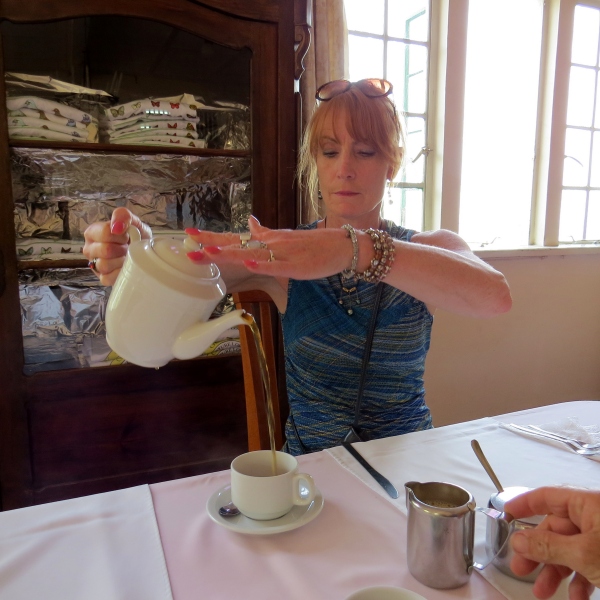
We took a peek out the back porch overlooking the hillside where hummingbird feeders attracted the local birds. The adjacent porch was falling away from the house and we wondered about the one upon which we were standing.
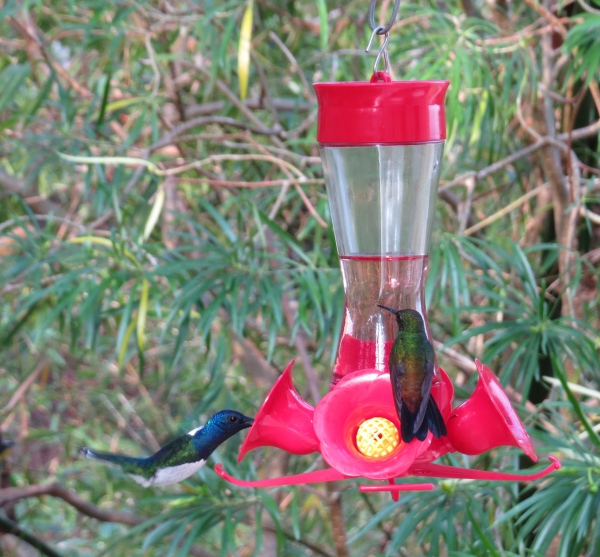
David left cash on the table for our tea. We wandered through the small parlor, seeking more information about the house and the Abbey, but could find none. We left without another word to or from the staff, quite disappointed.
We spotted a small graveyard, overlooking the city below, and walked through.
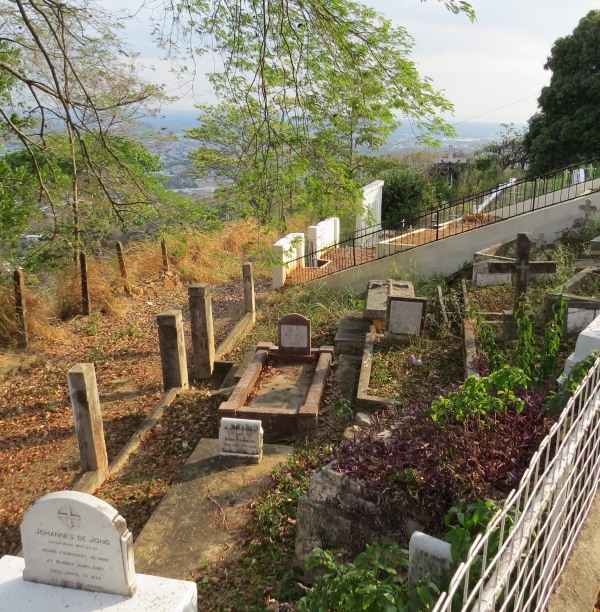
We climbed the steep hill to see what we could see, but were reluctant to trespass in areas in which we might not have been welcome. We saw a monk in the window of the abbey above and waved, but he closed his window and walked away without a sign of acknowledgment. Otherwise, we saw no place nor anybody to query.
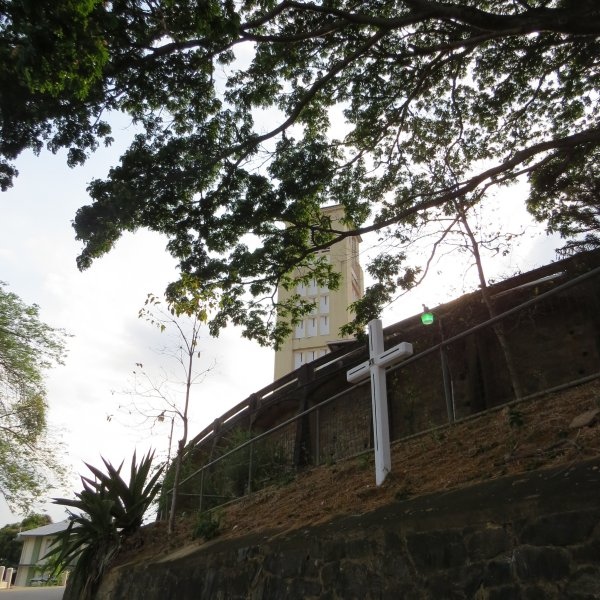
After the 1-1/2 hour trip in traffic to get there, it was a disappointing afternoon. It might well have just been the particular day we visited, but it was a letdown after having read so much about it. I guess I was expecting tiny watercress sandwiches on crust-less bread and clotted cream and fresh fruit on scones and a wonderful story about the Pax House and Abbey. I remembered having tea in England years ago and more recently the tea house we visited in Mauritius. Perhaps that's more of what I had in mind.
Ah, well … we survived our disappointment and moved on. Tomorrow we're heading into Port of Spain for a self-guided walking tour and look around. Put on some comfy shoes and come along.






















